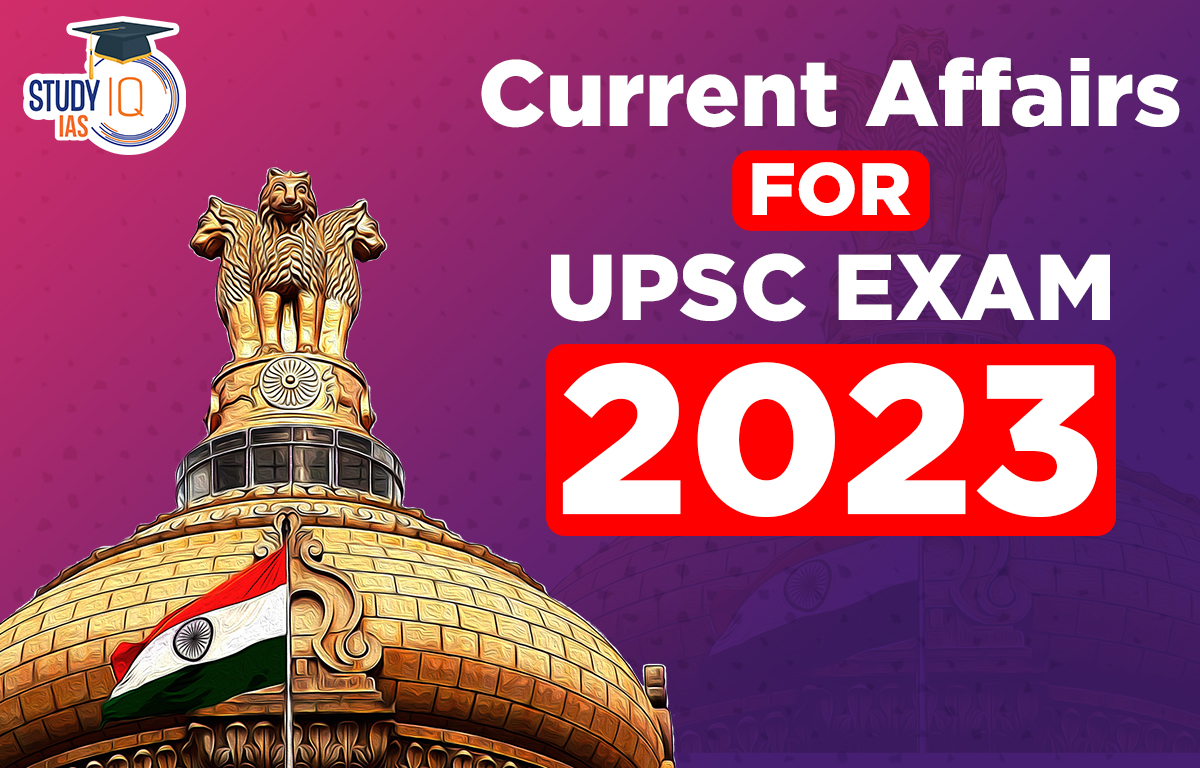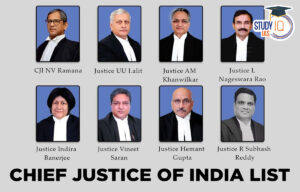Current Affairs 29th March 2023 for UPSC Prelims Exam
Essential Medicines
Context: Essential medicines including painkillers, antibiotics and anti-infectives are set to become costlier by more than 12% from April 1.
More on the News
- National Pharmaceutical Pricing Authority allowed a price hike of 12.1218% from April 1 for scheduled drugs that are under price control.
- This will cover more than 800 drugs on the National List of Essential Medicines.
About the National List of Essential Medicines (NLEM)
- The list is released by the Ministry of Health and Family welfare.
- Essential medicines are those that satisfy the priority healthcare needs of the majority of the population.
- The list is country specific which addresses the disease burden of the nation and refers to commonly used medicines at primary, secondary and tertiary level.
- The primary purpose of NLEM is to promote rational use of medicines considering the three important aspects i.e., cost, safety and efficacy.
- It also promotes prescription by generic names.
About the National Pharmaceutical Pricing Authority (NPPA)
- Objective: NPPA is a regulatory agency of the government responsible for controlling the prices of pharmaceutical drugs in India.
- Parent agency: NPPA was set up as an attached office of the Department of Chemicals and Petrochemicals (Now referred to as Department of Pharmaceuticals) on 29th August 1997.
- Headquarters: New Delhi, India.
- Functions: The organization performs the following functions:
- Fixes the price of drugs on the National List of Essential Medicines (NLEM) under schedule-I of Drug Price Control Orders (DPCO).
- It monitors the availability of drugs, identifies shortages, if any, and takes remedial steps.
- NPPA also renders advice to the Central Government on changes/revisions in the drug policy.
- It was made to fix or revise the prices of controlled bulk drugs and formulations and to enforce price and availability of the medicines in the country, under the Drugs (Prices Control) Order, 1995-2013 (DPCO).
Related Information
- DPCO (Drug Price Control Order 1995): It is an order issued by the Government of India under Essential Commodities Act, 1955 to regulate the prices of drugs. NPPA fixes the Ceiling price (price above which medicines cannot be sold) for medicines, as per the provision of DPCO.
- Scheduled & Non-Scheduled Drugs: The drugs (medicinal) can be divided into scheduled and non-scheduled drugs.
| Scheduled Drugs | Non-scheduled Drugs |
| These drugs are mentioned under Schedule I of DPCO. Since 2013 the schedule drugs consist of Essential Medicines which are declared by Government through NLEM
These drugs are subject to price regulation by the government. At present there are 74 scheduled bulk drugs (about 15% drugs). |
The drugs are not under the price regulation of the NPPA
Drugs (Prices) Control Order 2013 allows the manufacturers of non-scheduled drugs to increase the price of the non-scheduled drugs by 10% every year. Consist of 85% of drugs of pharma market. |
Current Affairs 28th March 2023 for UPSC Prelims Exam
No-Confidence Motion
Context: Opposition parties are deliberating the introduction of a no-confidence motion against the Lok Sabha speaker.
What is No-Confidence Motion?
- A no-confidence motion is a constitutional mechanism used to determine if person in a position of responsibility is still deemed fit to hold that position. It is generally used against Council of Ministers.
- This helps the elected representatives to determine if the person enjoys confidence of the House.
- Constitution: There constitution does not mention the term ‘No confidence motion’, but Articles 75 and 164 mention that the executive is collectively responsible to their respective legislatures.
- A motion can only be held in the lower house. The gap between two such motions must be six months.
- Implications of trust vote: The incumbent Chief Minister has to resign if the Council of Ministers fails to win the no-confidence motion.
Process of No-Confidence Motion
- The process finds mention under rule 198 of the Lok Sabha. A no-confidence motion can be moved against the ruling government by any member from the Opposition.
- The motion needs the support of at least 50 members before acceptance and subsequently, a date is notified by the Speaker for the discussion of the motion.
- The discussion on the motion has held within 10 days from the date of acceptance.
- Three different types of voting methods can be used:
- Ballot vote – Voting in secret in a ballot box. It is similar to voting in elections of the Parliament.
- Voice vote – Oral votes of present legislators are taken to determine majority.
- Division vote – Electronic gadgets or slips are used for division of votes.
Employees Provident Fund Organisation (EPFO)
Context: Employees Provident Fund Organisation (EPFO) has fixed the interest rate at 8.15% for financial year 2022-23.
More on the News
- There is a hike in the EPF account interest rate by 0.05%. Last year, the interest rate for EPF account was 8.10% for FY 2021-22.
- Interest rate is fixed by the Central Board of Trustees (CBT).
About EPFO
- EPFO stands for Employees’ Provident Fund Organisation.
- It is a statutory body established under Employees’ Provident Funds & Miscellaneous Provisions Act, 1952.
- It is an autonomous body that regulates and manages the Provident Funds (PF) in India.
- It comes under the Ministry of Labour and Employment.
- EPFO provides social security to the employees through these 3 schemes–
- The Employees’ Provident Funds Scheme, 1952 (EPF)
- The Employees’ Pension Scheme, 1995 (EPS)
- The Employees’ Deposit Linked Insurance Scheme, 1976 (EDLI)
- Administration: Schemes framed are administered by a tri-partite Board known as the Central Board of Trustees, consisting of representatives of Government (Both Central and State), Employers, and Employees.
- EPFO assists the Central Board of Trustees (EPF) in the administration of a provident fund scheme, pension scheme and an insurance scheme for the registered establishments in India and includes employees of such establishments and international workers who are covered.
- Other roles: EPFO is the nodal agency for implementing Bilateral Social Security Agreements with other countries.
- Significance: EPFO is one of the world’s largest Social Security Organisations in terms of clientele and the volume of financial transactions undertaken.
About Employees Provident Fund (EPF)
- It is a mandatory contribution for salaried employees.
- An employee makes 12% of his wages contribution to the EPF account on monthly basis.
- The employees’ full contribution is deposited to the EPF account.
- An employer is required to make the matching contribution to the EPF account.
- In case of employer, only 3.67 percent is deposited to the EPF account. The balance 8.33% goes towards the Employees Pension Scheme (EPS).
Captive Employment Initiative
Context: Recently, Union Minister for Rural Development onboarded 19 Captive Employers, a unique initiative under the Deen Dayal Upadhyaya Grameen Kaushalya Yojana (DDU-GKY).
About Captive Employment Initiative
- The ‘Captive Employment’ initiative is a unique effort to establish a dynamic and responsive skilling ecosystem that meets the demands of industry partners, while also ensuring sustainable employment opportunities for rural youth from underprivileged backgrounds.
- This initiative is a significant boost to the DDU-GKY programme, guaranteeing that trainees will be placed in jobs for a minimum of six months, with a minimum monthly salary of Rs 10,000/-.
- This program will be a game-changer for rural communities, providing a much-needed solution to their employment needs and elevating their standard of living.
- Additionally, the program will also contribute to achieving the United Nations’ sustainable development goals.
Captive Employment
- Captive employment refers to a situation where an employee is bound to work exclusively for a particular company or organization, usually through a contractual agreement or obligation.
- Captive employment is commonly used in industries such as finance, outsourcing, and manufacturing, where companies set up their own captive centres or subsidiaries to handle certain business processes or operations.
- It aims at addressing the vision of a dynamic and demand-based skilling ecosystem catering to the requirements of industry partners assuring sustainable placements for rural poor youth.
Captive Employer
- Any industry or employer that employs candidates within its own organisation or one of its subsidiaries and has adequate in-house training facilities is referred to as a captive employer.
- Captive placements are those that are offered by captive employers.
Deen Dayal Upadhyaya Grameen Kaushalya Yojana (DDU-GKY)
- The Deen Dayal Upadhyaya Grameen Kaushalya Yojana (DDU-GKY) is a skilling program initiated by the Ministry of Rural Development.
- It is operating under the National Rural Livelihood Mission (NRLM), that focuses on providing employment opportunities to disadvantaged rural youth.
- The program is funded by the Government of India’s Ministry of Rural Development and has been implemented in 27 states and 4 Union Territories.
- The primary goal of the program is to place trained rural youth in jobs, making it a placement-linked skilling initiative.
Gir National Park
Context: The Central government will re-examine the plan of translocating a few Asiatic lions from Gir National Park in Gujarat to Kuno National Park in Madhya Pradesh.
About Gir National Park
- Gir National Park and Wildlife Sanctuary (also called Sasan Gir) is a wildlife sanctuary and forest located at Talala Gir, Gujarat.
- It was established in 1965 and is a component of the ecosystem of the Khathiar-Gir dry deciduous forests.
- Significance: It is the only place in the world where we can see the Asian Lions in their natural forest.
- The Gir Wildlife Sanctuary complex is one of the seven protected areas (PA) selected for biodiversity conservation through the Eco-Development Project funded by the Global Environmental Facility and implemented by the World Bank, because of its uniqueness in having the only population of the Asiatic lion.
- Maldharis: Gir is often linked with “Maldharis” who have survived through the ages by having symbiotic relationship with the lion.
- Maldharis are pastoral communities living in Gir. Their settlements are called “nesses”.
Protection Status of Asiatic Lion
- IUCN Red List: Endangered
- CITES: Appendix I
- Wildlife (Protection) Act 1972: Schedule I
SMILE and SHRESHTA Scheme
Context: SMILE and SHRESHTA scheme are being implemented by Ministry of Social Justice & Empowerment.
About SHRESHTA (Scheme for Residential Education for Students in High Schools in Targeted Area):
- Aim: Providing seats for the meritorious SC boys and girls in the best private residential schools in the country.
- Every year, it is expected that about 3000 students would be selected for admission in Class 9 and Class 11 under the scheme.
- Background: Erstwhile Central Sector Scheme of “Grant-in-Aid to Voluntary and other Organizations working for Scheduled Castes” has been revised as SHRESHTA.
- Implementation agency: The Department of Social Justice & Empowerment, Ministry of Ministry of Social Justice & Empowerment.
- Objective:
- To enhance the reach of the development initiative of the government.
- To fill the gap in service-deprived Scheduled Castes (SCs) dominant areas in the sector of education by collaborating with voluntary organizations.
- To provide an environment for socio-economic upliftment and overall development of the Scheduled Castes (SCs).
- To provide access to high-quality education to bright Scheduled Caste (SC) students so that they can secure future opportunities.
- Benefits
- Provides an entry at Class 9th and 11th in CBSE-affiliated residential schools for completion of education till 12th.
- Grants are directly disbursed to the schools covering school fees and hostel fees for the students, subject to a ceiling of Rs. 75,000/- per annum per student of class 9 and 10 and Rs. 1,25,000/- per annum per student of class 11 and 12.
About SMILE (Support for Marginalised Individuals for Livelihood and Enterprise)
- It is an umbrella scheme designed to provide welfare measures to the Transgender community and the people engaged in the act of begging.
- It strengthens and expands the reach of the Rights that give the targeted group the necessary legal protection and a promise to a secured life.
- Sub-schemes: It has two sub-schemes – ‘Central Sector Scheme for Comprehensive Rehabilitation for Welfare of Transgender Persons’ and ‘Central Sector Scheme for Comprehensive Rehabilitation of persons engaged in the act of Begging’.
| Central Sector Scheme for Comprehensive Rehabilitation for Welfare of Transgender Persons | Comprehensive Rehabilitation of persons engaged in the act of Begging: |
| Scholarships for Transgender Students: Scholarships for students studying in IX and till post-graduation to enable them to complete their education.
Skill Development and Livelihood: Skill Development and Livelihood under PM-DAKSH scheme of the Department Composite Medical Health: A comprehensive package in convergence with PM-JAY supporting Gender-Reaffirmation surgeries through selected hospitals. Housing in the form of ‘Garima Greh’: Shelter Homes ‘Garima Greh’ where food, clothing, recreational facilities, skill development opportunities, recreational activities, medical support etc. will be provided. Transgender Protection Cell: Setting up of Transgender Protection in each state to monitor cases of offences and to ensure timely registration, investigation and prosecution of offences. E-Services (National Portal & Helpline and Advertisement) and other Welfare Measures |
Survey and Identification of beneficiaries shall be carried out by the Implementing Agencies.
Mobilisation: Outreach work will be done to mobilise the persons engaged in begging to avail the services available in the Shelter Homes. Rescue/Shelter Home: The shelter homes will facilitate education for children engaged in the act of Begging and children of persons engaged in the act of Begging. Comprehensive resettlement. |
PM KUSUM
Context: According to the Union Minister of New Renewable Energy, nearly 21 lakh farmers have benefitted from PM-KUSUM.
About PM-KUSUM
- The Ministry of New and Renewable Energy (MNRE) launched the Pradhan Mantri Kisan Urja Suraksha evem Utthan Mahabhiyan (PM KUSUM) Scheme for farmers, in 2019, for installation of solar pumps and grid connected solar and other renewable power plants in the country.
- Objectives of PM-KUSUM
- De-dieselisation of the farm sector.
- Providing water and energy security to farmers
- Increasing the income of farmers and curbing environmental pollution.
- Components under PM KUSUM
- 10,000 MW of Decentralized Ground Mounted Grid Connected Renewable Power Plants of individual plant size up to 2 MW.
- Installation of 17.50 lakh standalone Solar Powered Agriculture Pumps of individual pump capacity up to 7.5 HP.
- Solarisation of 10 Lakh Grid-connected Agriculture Pumps of individual pump capacity up to 7.5 HP.
- Implementing Agency
- State Nodal Agencies (SNAs) of MNRE will coordinate with States/UTs, Discoms and farmers for implementation of the scheme.
- Scheme Benefits
- It will provide a stable and continuous source of income to rural land owners, by utilising their dry land.
- In case cultivated fields are chosen for setting up solar power projects, the farmers could continue to grow crops as the solar panels are to be set up above a minimum height.
- Scheme ensures sufficient local solar/ other renewable energy based power availability, for feeding rural load centers and agriculture pump-set loads.
- Decentralized sub-stations, will result in reduced Transmission losses for STUs and Discoms.
- Solar pumps save the expenditure incurred on diesel and provide the farmers a reliable source of irrigation, while also preventing harmful pollution from running diesel pumps.
- Challenges associated with PM-KUSUM
- Access to finance for Farmers to install Solar Pumps/Grids.
- Depleting Water Table concerns need to be accounted for from cheaper supply of power through Solar Energy.
- Regulatory Barriers related to Solar Projects.


 Justice BR Gavai will take oath as 52nd ...
Justice BR Gavai will take oath as 52nd ...
 Harnessing Spiritual Aastha for River Re...
Harnessing Spiritual Aastha for River Re...
 Daily Quiz 18 April 2025
Daily Quiz 18 April 2025





















